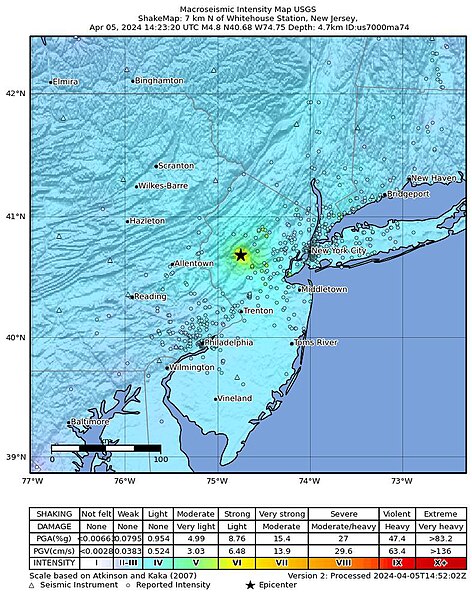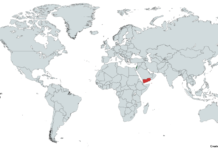Earlier Today, a 4.8 magnitude earthquake centered near Whitehouse Station, New Jersey, shook buildings and rattled residents across parts of the Northeast, with sensations reported from Philadelphia to New York City and as far-reaching as Washington, D.C., and Boston. The seismic event, described as one of the most substantial in New Jersey’s history, momentarily halted air travel, with ground stops issued at major airports including Newark, JFK, and Baltimore/Washington. Despite the widespread impact, New York Governor Kathy Hochul and New York City Mayor Eric Adams assured the public that there were no major damages or injuries, encouraging residents to continue with their day as usual.
The earthquake, unusual for its strength in a region where such events are rare but not entirely unexpected, prompted immediate responses from both local and federal officials. President Joe Biden was briefed, and the administration remained in close contact with authorities to monitor aftershocks and assess any potential damage to infrastructure. New Jersey Governor Phil Murphy activated the state’s emergency operations center as a precaution, urging residents to reserve 911 calls for actual emergencies only.
Residents across affected areas took to social media to share their experiences. In New York City, the event evoked comparisons to subway trains rumbling through buildings. For some, like Anne-Marie Green of CBS News and MSNBC host Lawrence O’Donnell, the earthquake was an intense reminder of the seismic activities they’d experienced in places like Los Angeles, known for its frequent quakes.
Despite the initial alarm, services such as New Jersey Transit experienced only minor delays due to bridge inspections, and there were no interruptions to Amtrak or the New York City subway system. This resilience highlights the effectiveness of the region’s emergency preparedness protocols.
Officials have reassured the public about the low likelihood of significant aftershocks, though they’ve advised staying alert to safety instructions. This event serves as a reminder of the Northeast’s susceptibility to seismic activities, despite its infrequency. The U.S. Geological Survey has noted that while earthquakes along the Atlantic Coast are uncommon, they are not unheard of, with Friday’s event marking the strongest to hit New Jersey in nearly 250 years.
The response to the earthquake demonstrated a swift and coordinated effort among local, state, and federal officials, ensuring public safety and minimizing disruption. As the region moves forward, the quake’s occurrence may prompt further examination of preparedness measures for similar unexpected natural events, ensuring the Northeast remains ready for any future seismic activities.
Image is in the public domain and was created by the United States Geological Survey.









